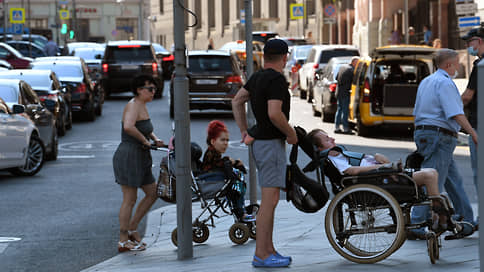How the Trump team uses artificial intelligence to search migrants

The United States under the leadership of President Donald Trump is strengthening the use of monitoring and artificial intelligence systems (AI) to track and arrest immigrants, which raises fears that the risks of accuracy and confidentiality could exhibit almost everyone at risk of being involved in repressions against potentially illegally entering the country.
The Ministry of Interior Security (DHS) and other immigration control agencies use a set of instruments with AI – as scanners to recognize persons in public areas and robotic dogs patrolling the southern border for human movement.
Many artificial intelligence tools used by immigration agents have existed for years and are a legacy of previous administrations, according to Saire Hussein, a lawyer at Electronic Frontier Foundation, a digital protection group. But now these tools have an « expanded range with regard to who they are directed to » and a wider range of people will have access to the data that these tools collect, Hussein said.
The extended surveillance network also includes services managed by private contractors such as Babel Street, which search social media accounts in social media to collect personal information.
Once this information is collected, agencies such as DHS and US Customs and Border Protection (CBP) use it to track immigrants’ locations, map their family trees and justify arrest orders and deportation decisions.
An example of the expanding scope is the new government program Catch and Revoke, triggered by Secretary of State Marco Rubio in March.
The program uses artificial intelligence to monitor the public statements of foreign citizens, especially of student visas holders, to locate those « who seem to support Hamas or other certain terrorist groups, » the Axios news website reported.
Anyone who is caught by the program is at the immediate risk of losing their visa, and more than 300 foreign citizens, including those with student and visitor visas, have been taken away on the initiative, according to Rubio. « If they take activities that contradict our … national interest, our foreign policy, we will cancel the visa, » Rubio said at a press conference on March 28. (Bel-Ror.-Later Court limited this number)
The risks of precision
Digital rights advocates indicate the tendency of artificial intelligence tools to respond with « hallucinations » – counterfeit answers or information that seem real but are fabricated – which makes them dangerous to use in situations requiring precision, such as the application of immigration laws.
The Paromite Chess, CEO of the Immigrants Rights, Just Futures Law, said the arrests of migrants using these instruments « raise many concerns about civil rights violations and abuse. »
Since Trump took office in January, there have been numerous cases of immigration officers acting on the basis of inaccurate artificial intelligence data, say human rights activists.
They include Jonathan Guerrero, an American citizen arrested by US Immigration and Customs Control Office agents (ICE) in Philadelphia, and Jensey Machado, an American citizen detained under the barrel of a gun while driving to a job in Virginia. Both were later released.
An executive order, signed by Trump in January, involves a possible return to « fast DNA tests » – a process used to check the family ties of migrants, which was abolished in 2023 due to fears of confidentiality and accuracy.

« Technology starts at the border and sneaks inside, without proven to be accurate, » Hussein said. « I think accuracy is not what this administration strives for. They are actually striving for the great glamorous news » We have been able to arrest how many people are. «
Tenendra Parmar, an independent technology analyzer, agreed, saying that accuracy is not a priority for the Trump administration, which is more concerned about achieving deportation goals. « The potential of the technology to make mistakes … it allows the current administration to set up a policy to deport artificial intelligence, » Parmar wrote on the Compiler news website.
Neither DHS nor ICE responded to the requests for comment.
Deployment of a wider network
Observation systems are not only aimed at immigrants, but rather at all in the US, citizens or not, researchers say.
In 2021, researchers at the University Law Center Georgetown found that ICE had access to driving licenses to three of four adults in the United States and could find the same number through their utility payments.
« These tools, requiring intensive data use, summarize all this information and create associations, » said Emerald Caus, an associate at the Center for the Privacy and Technology of the Faculty of Law of Georgetown. « (They) can reach the people in your household, your neighbors, your workplace, literally every aspect of your life. »
Experts say that the data aggregated in this way is introduced into algorithms that help decide who ICE should retain, whether to release a person from arrest or to determine the conditions for his electronic monitoring.
The scope of immigration agencies is also increasing. Another Trump enforcement order encourages the use of so -called 287 (G) agreements that allow DHS to delegate local law enforcement authorities to act as federal immigration officers.
This gives local authorities full access to artificial intelligence tools that ICE uses, along with all the personal data that these tools have collected. Which means that thousands of other immigration agents are handling personal data and searching for the people for whom the data are involved.
« I see a height here, » Hussein said. « The federals have their technology and the locals have their own technology. There will be a lot of sharing of this information and whatever data can be collected with technology. »





/s3/static.nrc.nl/images/gn4/data133759308-0bd2d7.jpg)

